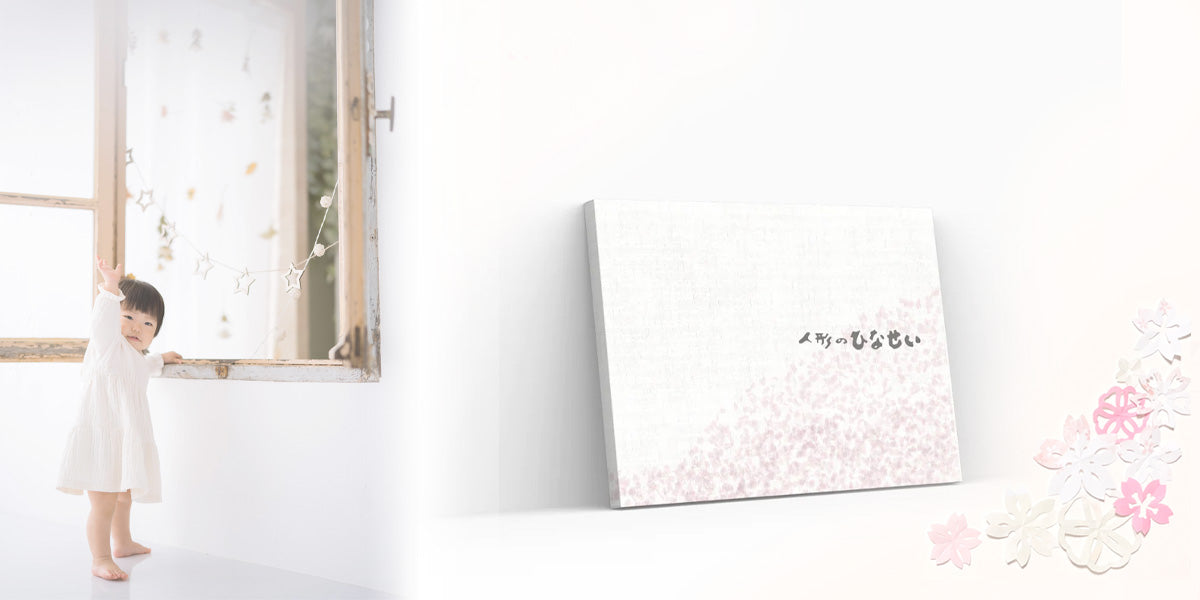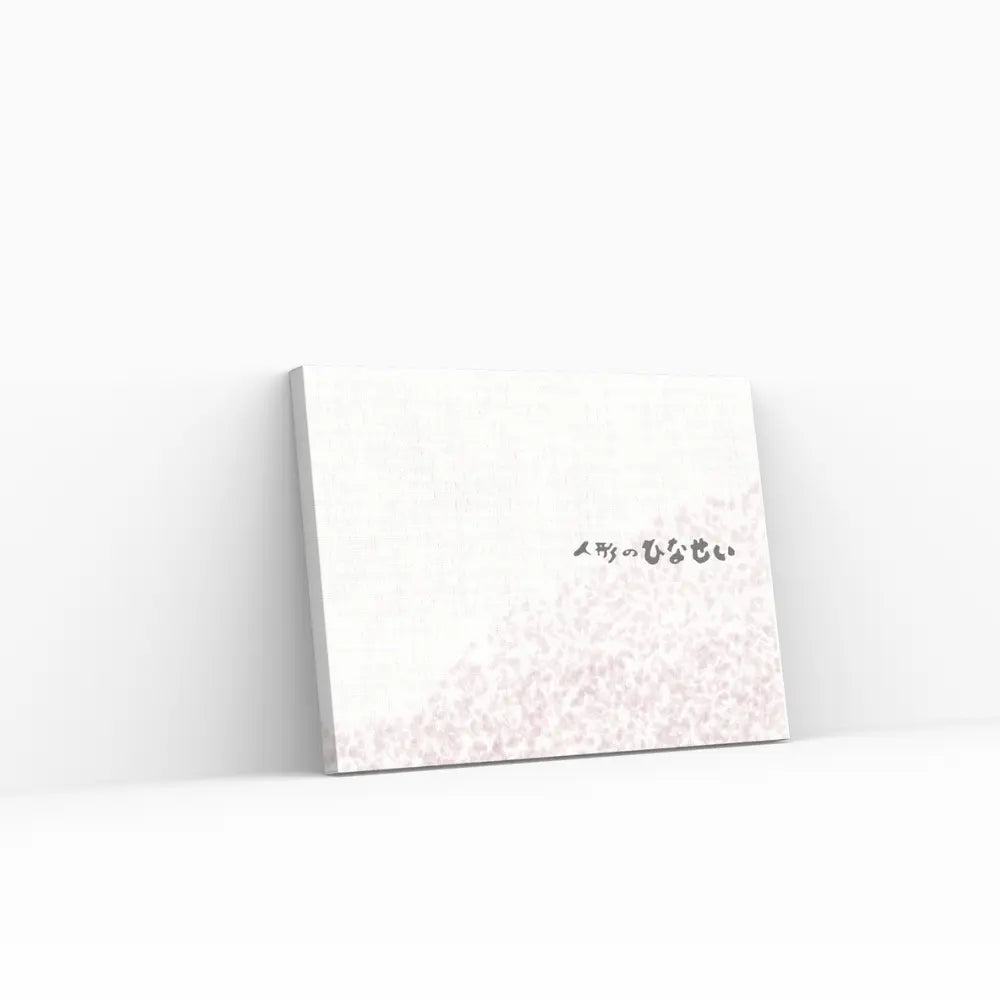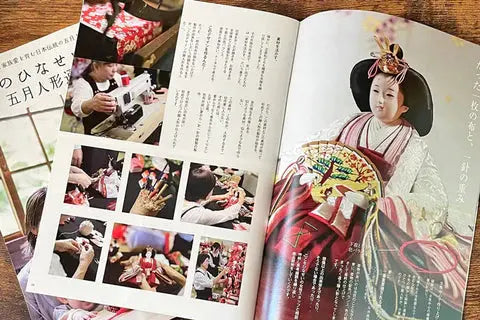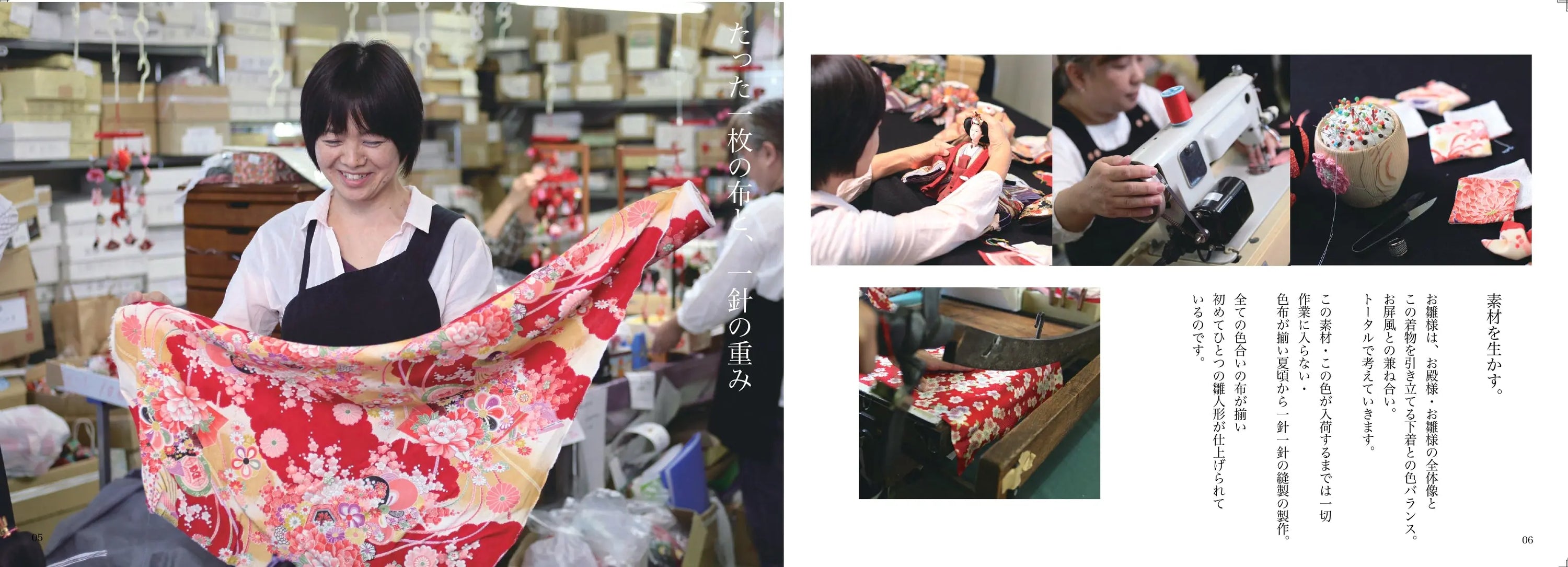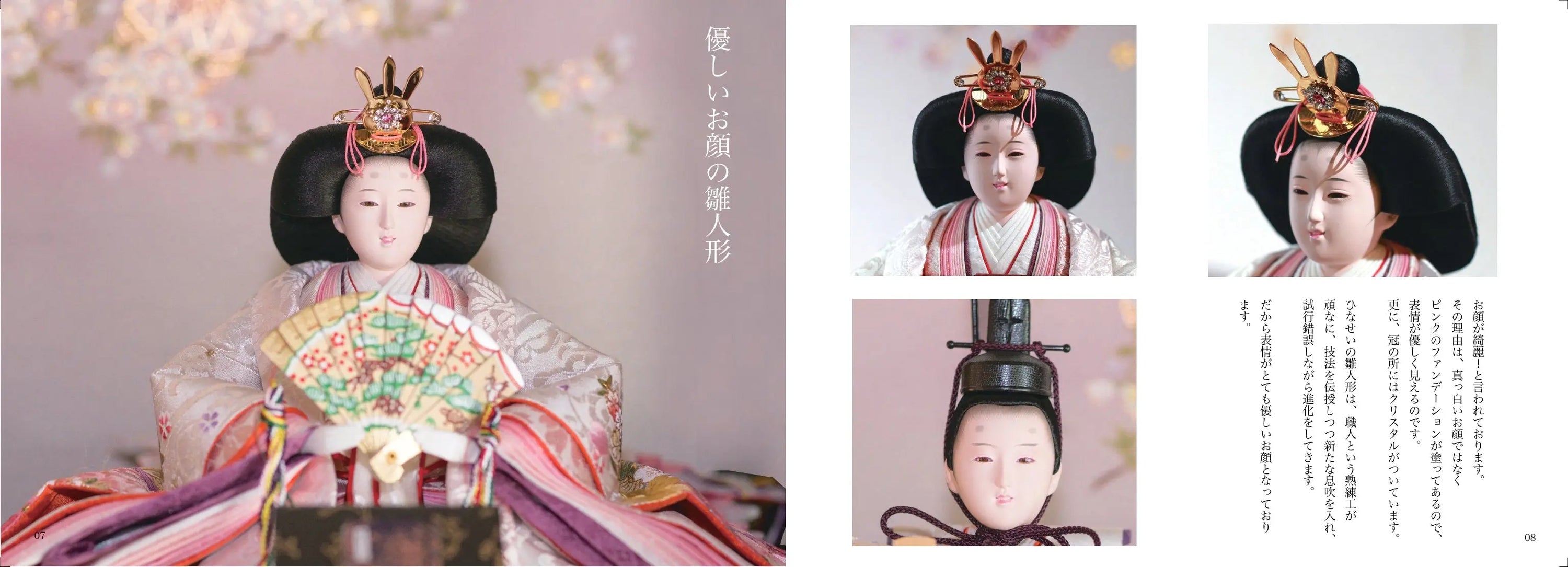"The origins and decorations of the Peach Festival | The meaning of a traditional event enjoyed by families"
Japan has a variety of traditional events.
One of these is Hinamatsuri.
Not only do you decorate withcute Hina dolls ,
Knowing the meaning will help you enjoy the Doll Festival even more.

---- table of contents ----
Click below to jump

1. What is the Peach Festival? The origin of the traditional event celebrated on March 3rd
The Peach Festival is a traditional event held every year on March 3rd in Japan.
It is especially widely known as a day to pray for the growth and happiness of girls .
This event is said to have originated from the "Joushisetsu" festival, which was introduced from ancient China.
In Japan, it has become established as one of the five seasonal festivals.
In Japan, peach blossoms bloom at this time of year,
It was given the name "Peach Festival."
Peach blossoms are said to have the power to ward off evil spirits ,
It is common for families to decorate their homes with peach blossoms in preparation for this day.
The main purpose of the Girls' Festival is to pray for the healthy growth and happiness of girls .
At home, "Hina dolls" are displayed,
We celebrate and pray for the girl's safe growth.
Hina dolls originated from a doll game called "Hina-asobi" that began in the Heian period.
Later, it came to have the meaning of protecting girls from misfortune.
On this day, families gather together and eat sweets such as hishi mochi and hina arare.
They often enjoy traditional foods,
The event is enjoyed by the whole family and serves as an opportunity to strengthen family bonds .
2. The difference between Hinamatsuri and Momo no Sekku
The Peach Festival is one of the five seasonal festivals in Japan, held on March 3rd.
It has become established as an event to pray mainly for the health and happiness of girls.
On the other hand, "Girl's Festival" is a traditional Japanese event that takes place on the same day.
This is an event celebrated by displaying Hina dolls .
In other words, the Peach Festival is a broader concept,
This includes Hinamatsuri.
On Hinamatsuri, it is said that girls are protected from misfortune by warding off evil spirits .
It was a grand event during the Edo period.
In particular, it has a strong meaning as the first festival , and is an important event in which the whole family takes part in celebration.
During the Hinamatsuri, the seven-tiered Hina doll display is considered the most spectacular.
The family gathered together and prayed for their daughter's growth.
Enjoying traditional cuisine is the centerpiece of the event.
In particular, the hishi mochi and hina arare rice crackers eaten on this day are
It is meant to represent the change of seasons,
It expresses prayers for the prosperity and health of the family .
3. How to decorate for the Doll Festival and choose a Hina doll?
Displaying Hina dolls is one of the most important aspects of celebrating the Doll Festival.
In this event, by displaying Hina dolls , people pray for the health of girls,
It is meant to protect from evil spirits.
The origins of Hina dolls date back to the Heian period.
At the time, it was enjoyed as a doll game called "Hina-asobi."
This game gradually came to have meaning as a ritual to ward off evil spirits ,
This developed into the modern custom of "displaying Hina dolls."
There are many different types of Hina dolls,
The most common type is a luxurious set called a seven-tiered display set.
This set includes prince and princess dolls representing the Emperor and Empress,
Dolls such as the Three Court Ladies and the Five Musicians are displayed.
Nowadays, due to space issues, there are only two-person decorations ,
Simple case decorations are also popular.
Hina dolls are symbols of protection for girls and represent wishes for the prosperity and health of the family.
4. Why is March 3rd the Girls' Festival?
Relationship with events introduced from China
The reason why March 3rd became the date for the Girls' Festival is as follows:
There is an event called "Joushisetsu" that was introduced from China.
Jōshi-setsu is a ritual to ward off evil spirits that was held on the first day of the third month of the lunar calendar, the day of the snake.
By purifying the body in the river, people prayed for good health and warded off bad luck for the year.
This custom was introduced to Japan,
It has come to be accepted as an important event held at the change of seasons.
In particular, peach blossoms bloom in Japan at this time of year,
Peaches are said to have the power to ward off evil spirits,
It became known as "Peach Festival."
Peach blossoms are considered a symbol of longevity and protection from evil.
It is believed that displaying it in the home will ward off evil spirits and protect the health of the entire family.
In this way, the Doll Festival is not just an event to celebrate the growth of girls,
It is also an important event to pray for the prosperity of the entire family.

5. An essential ceremonial food for the Girls' Festival
The meaning of chirashi sushi and diamond-shaped rice cakes
One of the charms of the Doll Festival is the traditional foods that are an essential part of the event.
Particularly popular during this time is
These include chirashi sushi, diamond-shaped rice cakes, Hina arare rice crackers, and clam soup.
Each dish has a deep meaning.
For example, chirashi sushi has a gorgeous appearance with colorful ingredients scattered all over it.
It symbolizes abundance and prosperity.
Thinly sliced egg, shrimp, bamboo shoots, etc. are often used.
Shrimp "live long enough to bend over"
Bamboo shoots represent healthy growth.
Hishimochi is a three-layered mochi with green, white, and red (pink) colors.
It represents health, purification and vitality.
Clam soup is a prayer for marital harmony and good relationships.
6. The talismanic power of peach blossoms
Ancient beliefs
Peach blossoms have been a symbol of protection from evil since ancient China.
It plays an important role in the Doll Festival.
The power of peach blossoms to ward off evil is based on an old Chinese legend.
It has been used especially as a fruit to ward off evil spirits.
Peach fruits also protect families from disaster,
It is believed to be a fruit that brings longevity and prosperity.
This tradition was also introduced to Japan,
It is a deeply rooted custom to decorate with peach blossoms to pray for the health and safety of the family.
On the day of the Girls' Festival, it is common to decorate the house with peach blossoms.
Along with its beautiful appearance, it also serves as a talisman.
It is meant to wish for the health and longevity of the whole family.
Peach blossoms are an essential part of Japanese culture.
7. Celebrating Girls' Day with Family
How to develop and bond with your girl
The Peach Festival is not just an event,
It is also an important opportunity to strengthen family bonds.
On this day, the whole family gathers together to celebrate and pray for the girl's health and happiness.
On Hinamatsuri, families decorate dolls and celebrate the growth of girls .
Decorating becomes a family event,
Spending time together strengthens the bond between parents and daughters.
Grandparents are often invited to celebrate the first festival .
It serves as an important event where the whole family comes together.
It is also customary to enjoy traditional food with family on this day.
Chirashizushi, Hina Arare, Hishimochi, etc.
The whole family makes the dishes that are essential for the Girls' Festival.
Gathering around the dinner table allows the whole family to participate and celebrate.
In this way, the Doll Festival is not just for girls,
It is also a special day that strengthens the bonds between the whole family.

8. The origin and development of the Girls' Festival
The influence of Chinese Sacred Snake Festival on Japanese culture
The origins of the Doll Festival date back to the ancient Chinese festival of Shangshi.
On the day of the snake in early March of the lunar calendar, people purify themselves in the river to ward off evil spirits.
It was an event to pray for good health.
This custom was introduced to Japan,
It has become established as an important event held at the change of seasons.
In particular, March 3rd coincides with the time when peach blossoms bloom,
It was given the name "Peach Festival."
The Jōshi Festival, which was introduced to Japan, has become intertwined with Japan's unique culture over time.
This event has developed into one that prays for the healthy growth of girls .
On this day, families decorate Hina dolls ,
It has become a day to pray for the growth and happiness of daughters.
During the Edo period, this custom spread throughout the country.
In particular, the first festival (the first peach festival after birth) is considered a special occasion of celebration.
Family and relatives gathered together to celebrate in a grand manner.
In this way, the Doll Festival is based on the Joshi Festival, which was introduced from China.
It has developed into an event that values family ties, unique to Japan.
9. Peaches as auspicious gifts
Wishes for health and longevity embodied in the Doll Festival
The reason why peach fruits and flowers have a special meaning during the Girls' Festival is that
It originates from ancient China.
Peaches are a fruit that symbolizes longevity and prosperity.
It has been believed to have the power to ward off evil spirits.
In particular, legends about immortality have been passed down since ancient times.
Eating peaches keeps you healthy,
There is a strong belief that it will help you live longer.
With this background, on the Girls' Festival , people pray for the health and longevity of the whole family .
Peach blossoms and fruit are now used as decorations.
In China, peaches are considered sacred fruits, and in places where immortals are said to live,
There is a legend that a peach tree was planted there.
The mysterious power of peaches has influenced Japanese seasonal festivals,
It is a symbol of prayer for the health of the whole family and the healthy growth of girls.
It plays an important role.
In addition, in modern times, it is common to use peach blossoms to celebrate the Girls' Festival.
Beautiful flowers bring spring into your home and brighten it up.
Decorating with peach blossoms emphasizes the desire for happiness and health for the family.
You can enjoy it as part of your event.
10. The power of Hina dolls to ward off evil spirits
Its cultural and traditional meaning
Hina dolls play an important role in the Doll Festival.
Its origins date back to the Heian period when dolls were played with, known as "Hina-asobi."
Originally, they were simple objects made of paper and grass.
However, during the Edo period, gorgeous Hina dolls began to be made,
The meaning of warding off evil spirits became stronger.
Hina dolls are based on the idea that children's bad luck is transferred to the dolls.
It is decorated to protect girls.
It is said that the Hina dolls absorb misfortune and help the daughter grow up healthy and safe.
In particular, the seven-tiered Hina doll display is centered around the prince and princess dolls that represent the Emperor and Empress.
The palace's people and implements are arranged,
It is treasured as a symbol of a girl's future happiness .
Parents can help their children decorate the house while explaining the process.
It also strengthens the bond between parent and child , so it's important to continue this tradition as a family.
For those who want to know more about the cultural background of Hinamatsuri and Japanese art
Japanese events held throughout the seasons: Art Forest
11. Enjoying the Doll Festival with the Family
How to spend traditional events that deepen bonds
The Girls' Festival is an important event where the whole family gathers together to celebrate the growth of girls .
This event strengthens family ties,
It is a good opportunity to pass on traditional values to the next generation.
To enjoy the Girls' Festival at home,
It's important to keep a few points in mind.
First of all, the center of the Doll Festival is the decoration of the Hina dolls .
By having the whole family work together to carefully decorate the Hina dolls, the bond between parents and children will deepen.
Especially for the first festival , grandparents and relatives are invited.
It's an opportunity to reaffirm the importance of family .
Once you've finished decorating, taking commemorative photos will make for a great memory.
It is also important to enjoy traditional ceremonial foods on this day.
Chirashizushi, Hina Arare, Hishimochi, etc.
By making the dishes that are essential for the Doll Festival together as a family and gathering around the dinner table,
The whole family can join in and celebrate.

Celebrate with Hinasei's most popular Hina dolls, Kanae Hina
12. Learn about the Doll Festival and how to celebrate it with your family
The significance of traditional events
Celebrating the Girls' Festival with your family
It has a deeper meaning that goes beyond being a simple event.
This event is held to pray for the healthy growth of girls.
It's a special time to share the joy with the whole family.
Also, by passing on traditional customs to the next generation,
This will enable us to continue to cherish and preserve Japanese culture and values.
When celebrating the Girls' Festival, it is important to understand the meaning and background of the event.
It's about celebrating with gratitude .
In today's busy daily lives, the whole family
Although we often have limited time to spend together,
The Doll Festival is a precious opportunity for families to spend time together .
Through this day, we confirm our family ties,
It is important to make time to warmly watch over my daughter as she grows.
A little trivia
How do you read "Girls' Day"? What is it called in English?
"Peach Festival" is pronounced "momo no sekku."
In English it is called "Girls' Day" or "Doll's Festival."
It is sometimes officially called the "Peach Festival,"
They are more commonly known as "Girls' Day."
What is another name for the Peach Festival?
It is also called "Girl's Festival" or "Jomi Festival."
The legend of peaches and immortality
In ancient Chinese legend, peaches were believed to have the power to grant immortality.
My family believes that eating peaches will make you healthier and live longer.
I can imagine them enjoying peaches while talking like this.
By believing in these legends, the whole family can pray for good health and long life.
Why do peaches ward off evil spirits? Are they a fruit that wards off bad luck and evil spirits?
In ancient China, peaches and flowers were used as a talisman and a fruit with the power to ward off evil spirits.
This custom was introduced to Japan.
It is believed that decorating with peach blossoms will protect the health and happiness of the family.
With spring just around the corner, it's the season when skin problems are more likely to occur.
Take care of your dolls according to the season and prepare them for commemorative photos of Hinamatsuri.
Spring is just around the corner! March skincare and anti-aging care

